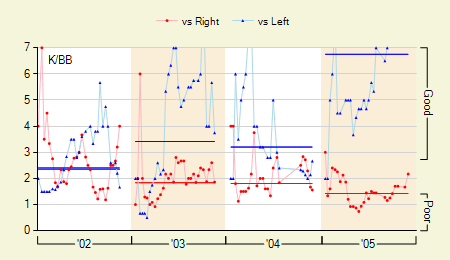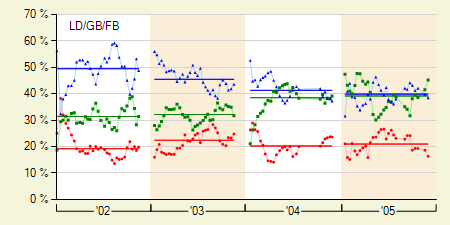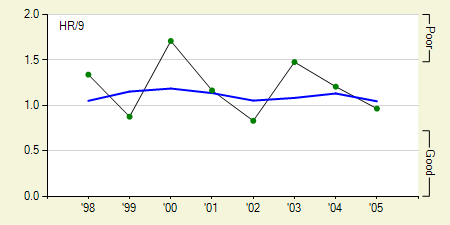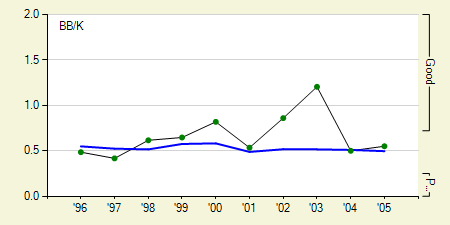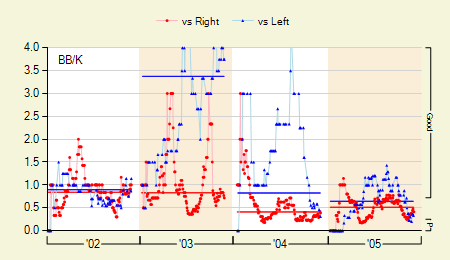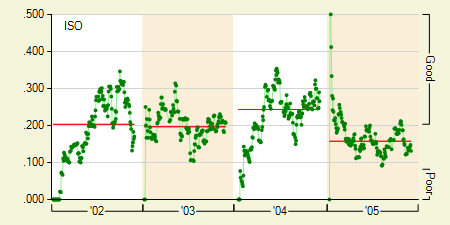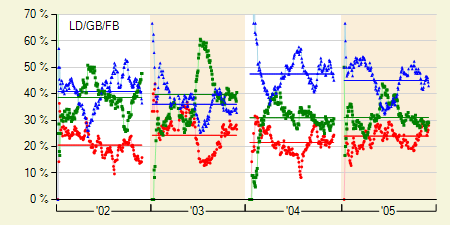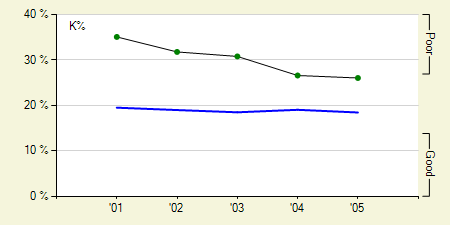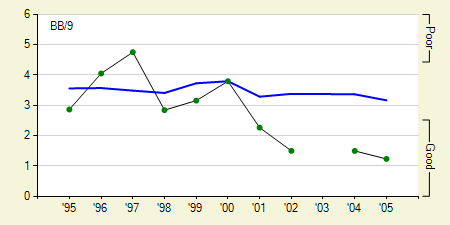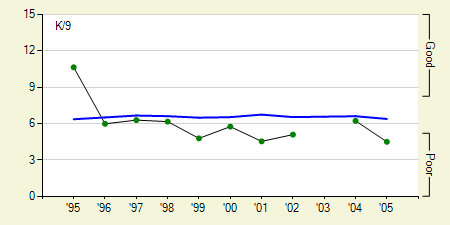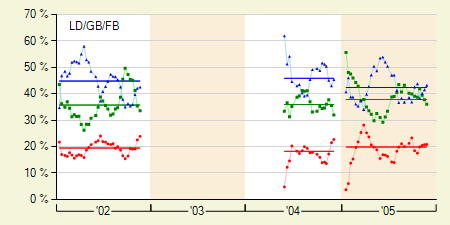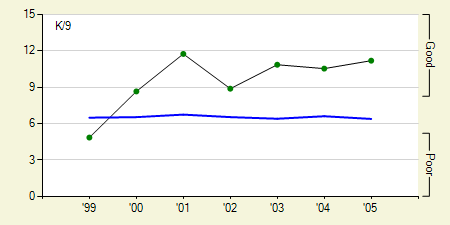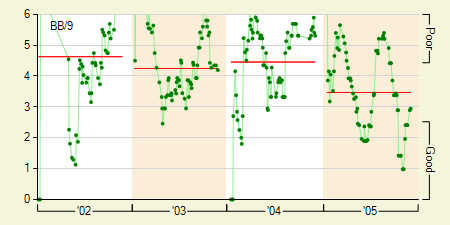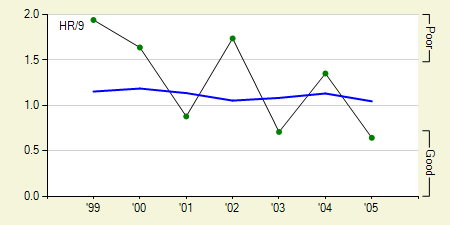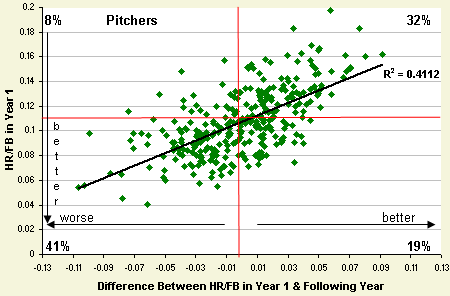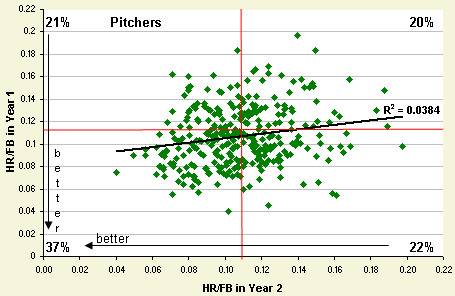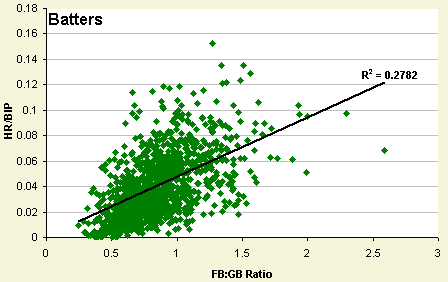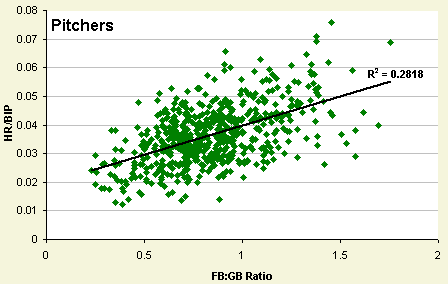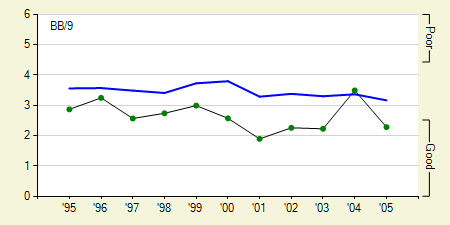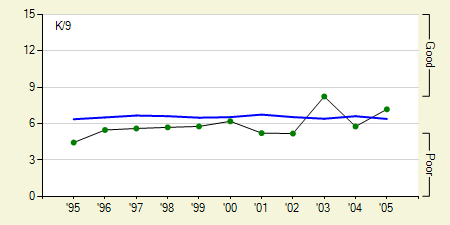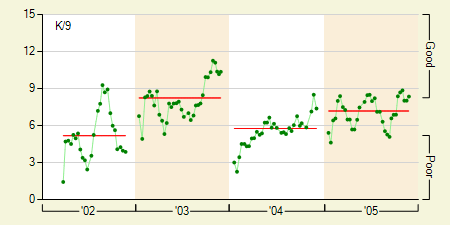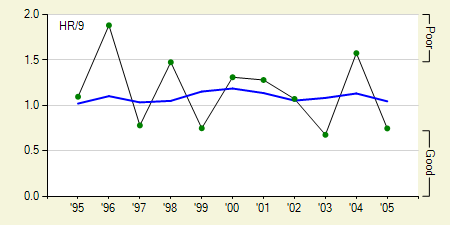Daily Graphing – Vicente Padilla
Did Vicente Padilla being traded to the Rangers yesterday go under the radar or what? I didn't find out about it until I opened up a Washington Post during lunch, and it's not like I have my head under a rock or anything. Anyway, the one time All-Star will be pitching at Arlington Field which believe it or not, is a better place for a right-handed pitcher than Citizens Bank Park. After having two nice season in 2002 and 2003, he's been plagued by various elbow injuries that have limited him to 262 innings with a 4.63 ERA the past two seasons. What are the chances he returns to his 2002-2003 form?

Oddly enough, his strikeouts per 9 innings (K/9) were slightly up the past two years despite his injuries. His K/9 of 6.3 is just above the league average of 6.0 for starting pitchers. Unfortunately, his walks per 9 innings (BB/9) were up as well. Up by a lot.
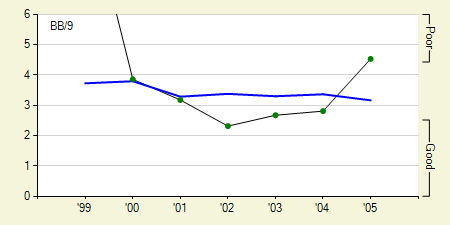
Hopefully the huge spike in his BB/9 was injury related or just an incredibly off year. Chances are it was a combination of the two. The same thing can probably be said about his home run rate (HR/9) which also showed a considerable increase. He had 14.9% of his fly balls leave the park in 2005. With the league average being around 11%, that number is likely to improve next year.
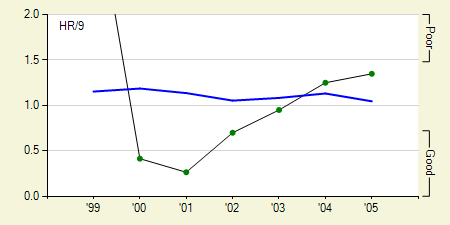
Vicente Padilla's 2005 seems like it was a very off season mostly due to his nagging injuries. His K/9 is solid, so his success will hinge on him getting his walks and home runs down to where they were prior to 2004. While Arlington Field may be more pitcher friendly than Citizens Bank Park, it's not that much friendlier and a switch over the American League means he'll have to deal with facing a DH. I think he'll defintily rebound in 2006, but he has his work cut out for him.
